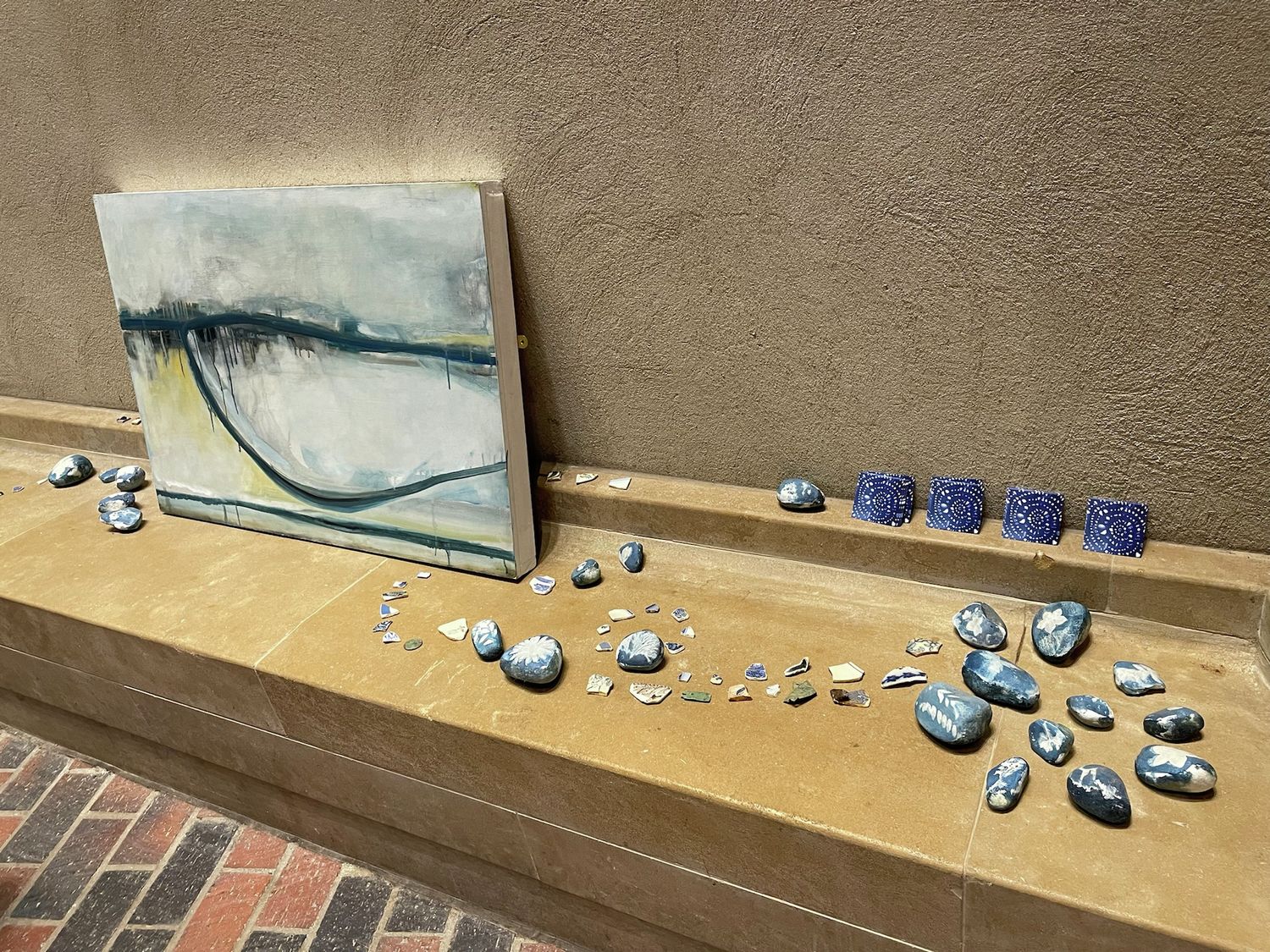How can we make sense of our connection to rivers? In what ways do they play into existing social and ecological tensions? Running from Wednesday 22nd to Sunday 26th June, ‘Immersions into the River Cam’ is an exciting exhibition that dives headfirst into these questions. It displayed works of art from over 30 artists and contributors, which show different perspectives and interpretations of rivers, concerning who they belong to, how they can become a site of commonality rather than division, and how we can preserve and protect them.
The artists involved came from a variety of backgrounds, both artistically and in their lives more generally. Some artists are former Cambridge University students, whilst others moved to Cambridge and found inspiration in the river, and others have lived here their whole lives. What unites them is their ability to express their unique connection to the River Cam through paintings, sculptures, poetry, film and other mediums, taking the theme in diverse and sometimes unexpected directions.
We attended the opening night last Wednesday and wrote our own reflections on the artworks and themes that stood out to us.
Esmé
Whilst reading the artists’ statements about their work, what stood out to me was how many talked about the impact of the pandemic. Some had to adapt their artistic practices to the restrictions; Katy Bailey had to walk in her local area to find objects for her project, whilst Jessica Leigh Henry began to create digital artworks intended to be viewed through a screen rather than in person. Others found water to be a place of solace during this difficult time, as shown by Jo Gifford’s poetry about her experiences of wild swimming.
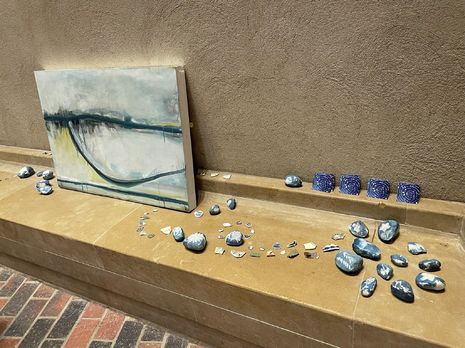
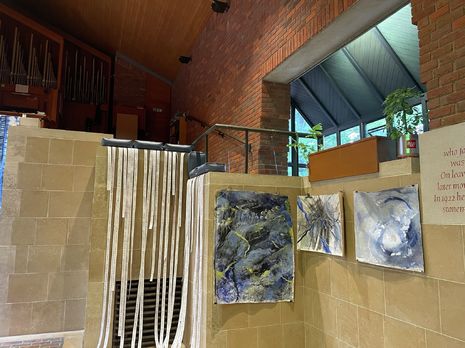
Simultaneously, the exhibition also provided a platform for activist voices and more politically charged artworks. Up the stairs in the chapel, there were various leaflets and documents from local activist groups and charities, including Friends of the River Cam and The Cam Valley Forum, who call for the protection of the river and its wildlife. They emphasise the river not only as a shared space, but also as something with its own legal status and rights.
Other works of art featured in the exhibition contained political undertones or social commentaries. Abi Spendlove’s work Washed Out, which was created using powdered plant dyes and ice using water from the Bin Brook, signals at the ways that women’s domestic labour, such as the laundry that they washed in the river, have been ‘washed out’ of history. However, these commentaries are not always overt; Maria Picazo’s painting underneath both represents the river as a place for people to connect with nature, as well as highlighting the threat of pollution, by painting the water using dark colours alongside clearer blues. Out of the many comparisons that could be made between differing representations of the river, this tension between the river as both an opportunity to heal and perhaps escape from life’s problems, and a site of political mobilisation, was the one I noticed the most.
“The exhibition also provided a platform for activist voices and more politically charged artworks”
When speaking to co-curator Mattie O’Callaghan at the exhibition, they mentioned how their background in geography (after graduating from Cambridge with a Geography degree in 2020) helped to provide a unique insight into their explorations of the natural world in art. The influence of their background in geography can also be seen in the way that the exhibition was laid out, with the artworks flowing from the chapel through to the vault (where red letters were placed to spell ‘raft’ in Susie Johnson’s work) and along the Bin Brook which flows through the College and leads to the River Cam.
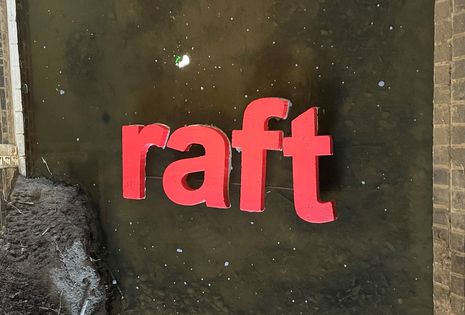
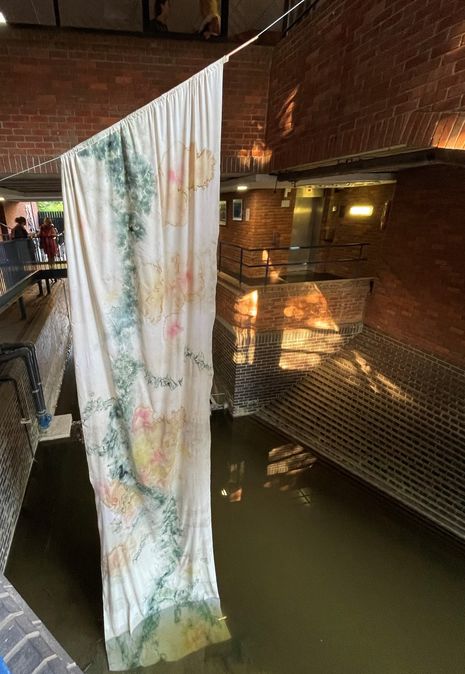
We ended our journey in a small dark room within the chapel, watching Phoebe Bostock’s short film about wild swimming in Grantchester Meadows. It felt fitting to leave the exhibition on this note; the themes that arose within the artworks in a more abstract way were reaffirmed by peoples’ accounts of wild swimming, bringing the river to life all over again.
Zoe
Had the exhibition been stripped of the right to refer to itself with any waterway-related terms, it would likely have been defined in terms of fragility. One could even argue that it was the theme of fragility around which the artworks presented truly revolved, with the physical form of the river merely providing a pertinent visual reference through which the artists involved with Immersions could access the idea of fragility in a directed and coherent manner, thereby lending a pleasant unity to the whole show.
“Sometimes art is best when it speaks for itself”
From diffuse cyanotypes - prints produced via a chemical reaction with sunlight - to monumental tapestries, fluid and free-flowing strokes were ubiquitous. As Bin Brook meandered under the site of Robinson, a solid stream of ink and paint wound its way just as gracefully around the walls and walkways of the College. Both river and artwork appeared to be part of a single unity of of aquatic transience and ephemerality, visible only in unceasing movement. The force of Mattie’s skilful curation was especially evident in the curious parallel between the movement of the exhibition out of the tightly-packed environment of the college chapel into the open space of the gardens and the concomitant departure of Bin Brook into the wilds beyond the University proper from the bricked-up density of the Robinson site.
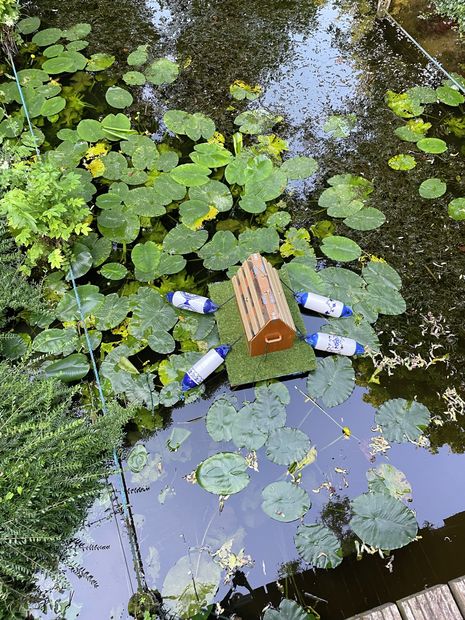
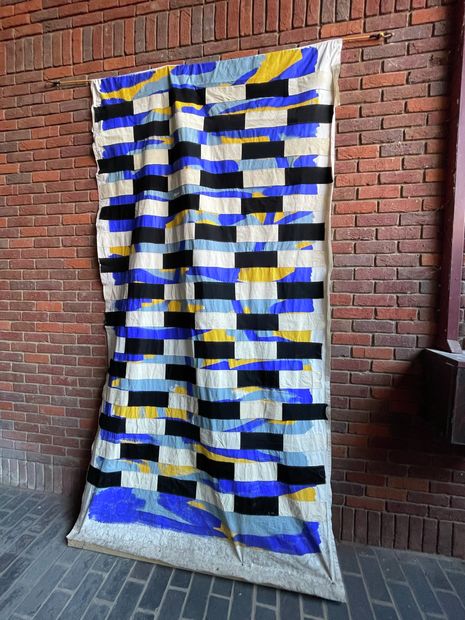
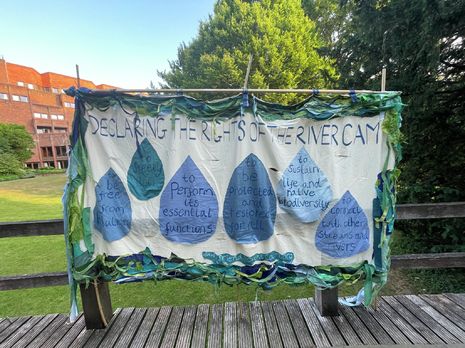
The oceanic feeling one gains from this exhibition is more or less annihilated by the sobering materials from ecological researchers provided on the upper level of the college chapel. Yet this is perhaps not entirely without reason. A little mystical bliss is all well and good when it comes to soothing the heart in the moment, but there won’t be much respite available in the drought-ridden world we’re told awaits us if we don’t grant the Cam legal personhood, as the large Friends of the Cam tapestry just outside the chapel proclaims.
Yet sometimes art is best when it speaks for itself, and the majesty of the river itself clearly stands on its own two metaphorical legs in the eyes of the wild swimmers featured in Phoebe Bostock’s documentary. Art is a brilliant vehicle for political mobilisation, as Banksy and Ai Weiwei masterfully show, but surely both lose some of their force when they’re mixed indiscriminately, losing their individual identities. When good art breeds wonder, let it do so in peace, I say - harness that wonder later, rather than interfering with the process prematurely.
For more information about the exhibition, visit: https://www.robinson.cam.ac.uk/news/immersions-river-cam-22-june-26-june-2022

